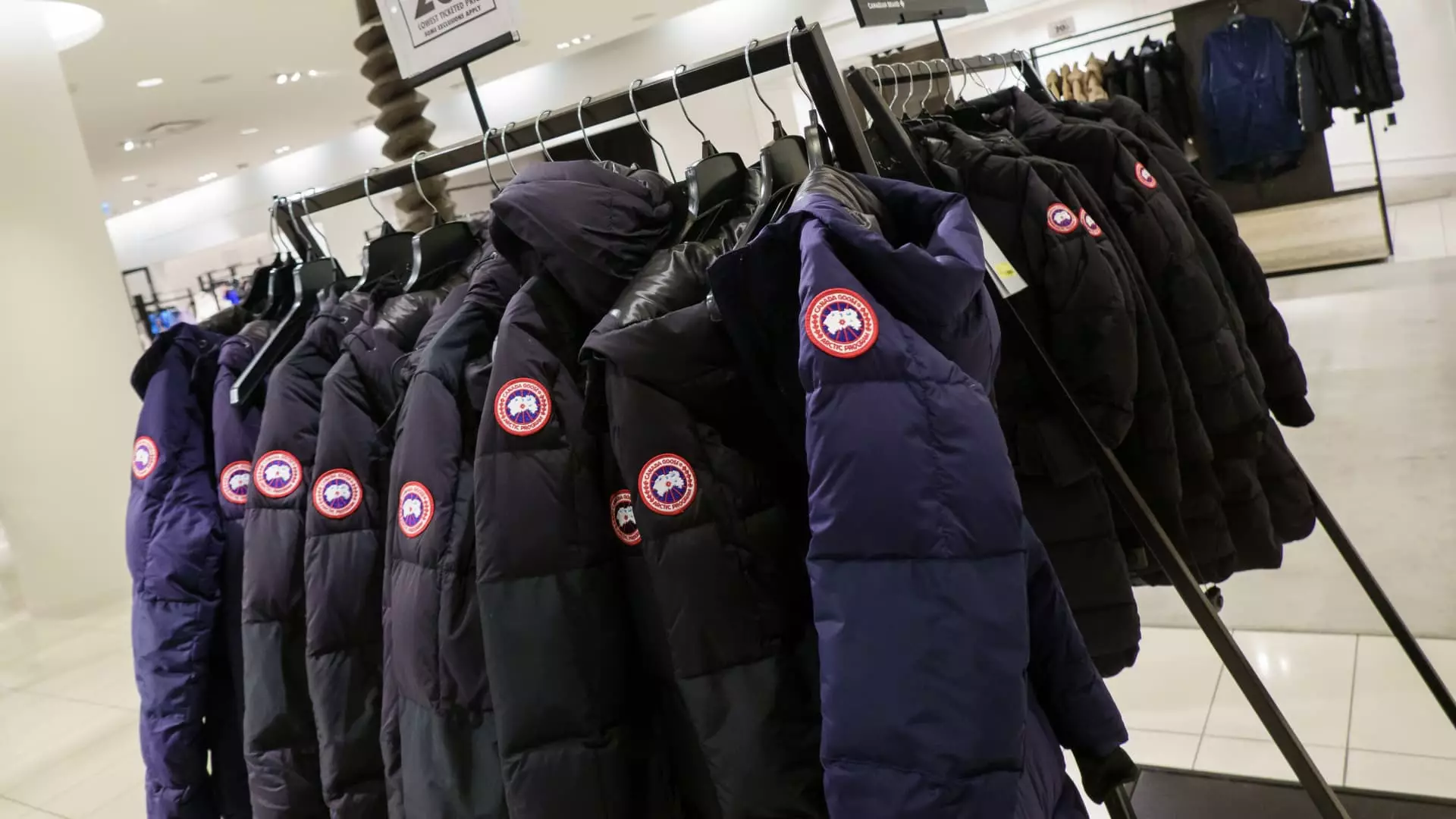In an era of swirling economic uncertainty, Canada Goose has managed to carve out a silver lining. The luxury outerwear brand witnessed a notable rise in its shares, climbing over 20% after it announced a fiscal fourth-quarter earnings report that surpassed analysts’ expectations. While it may seem paradoxical for a brand in the luxury sector to thrive during turbulent times, Canada Goose’s ability to navigate this chaos offers important insights into the resilience of high-end retail.
The company’s decision to withhold financial guidance for fiscal 2026 can be seen as both a cautious strategy and a clear acknowledgment of the “macroeconomic uncertainty” that is bearing down on consumers. This caution is not unwarranted; other luxury brands have reported sluggish sales as shifting consumer behavior poses challenges. According to Canada Goose’s Chief Operating Officer Beth Clymer, the dynamic consumer spending patterns are a direct result of an unpredictable global trade environment—an insight that rings true across the luxury sector.
Weathering the Storm: A Testament to Brand Strength
Despite the caution surrounding fiscal forecasts, Canada Goose remains steadfast in its confidence in brand strength and financial stability. Historically, the company has proven its ability to adapt and adjust to market conditions, emerging from past economic difficulties like the 2008 recession and the Covid-19 pandemic stronger each time. This resilience is commendable; Canada Goose successfully pivoting during challenging times serves as a powerful case study in the luxury sector’s adaptability. As CEO Dani Reiss mentioned, the majority of their products are shielded from tariffs, which is a substantial advantage that positions them favorably in a highly charged geopolitical climate.
Their commitment to manufacturing in Canada, with 75% of production domestically sourced, provides not only a boon in terms of tariffs but also in brand integrity. Canada Goose’s marketing strategy thrives on the narrative of Canadian expertise and craftsmanship, and any disruptions to production lines in Europe appear to have minimal financial impact. Still, acknowledging the indirect disruption of global events allows investors and consumers alike to recognize the brand’s awareness of the complexities in today’s market.
A New Approach to Innovation
One of Canada Goose’s recent strides into innovative territory was its foray into eyewear, which included an artificial intelligence-powered virtual try-on tool. This launch demonstrates the brand’s dedication to maintaining relevance beyond the cold-weather gear that has made them iconic. As they attempt to diversify their product offerings, expanding into rain jackets and warm-weather attire, Canada Goose capitalizes on the high-end consumer’s need for year-round luxury.
The expansion into non-winter categories represents more than just an attempt at diversification; it is a strategic pivot aimed at securing a foothold in a luxury market that has been under pressure. Establishing their eyewear line as a “key milestone” in this journey speaks to a broader ambition of solidifying the brand’s presence as a true lifestyle label. This will not only help Canada Goose buffer against inevitable seasonal fluctuations but also create opportunities to build more robust customer loyalty.
The Broader Context: Challenges Facing the Luxury Sector
While Canada Goose has found positive momentum, the overall luxury industry reveals a complex tableau of challenges. Major players like LVMH and Kering are grappling with their own sales slowdowns, suggesting that the sector is at a crossroads. A downturn in consumer spending, possibly influenced by inflationary pressures and economic uncertainty, poses a looming threat. For Canada Goose to maintain its upward trajectory amid these broader challenges, it will need to continue innovating and effectively communicating its value proposition.
The luxury market is arguably at a precipice, and with companies such as Canada Goose committed to navigating uncertainties intelligently, the next few years will be crucial in determining new trends. Embracing change while acknowledging the existing landscape will be vital for maintaining growth and relevance. It is no longer enough to rely on past successes; proactive evolution is imperative for brands hoping to thrive in the 21st-century marketplace.

